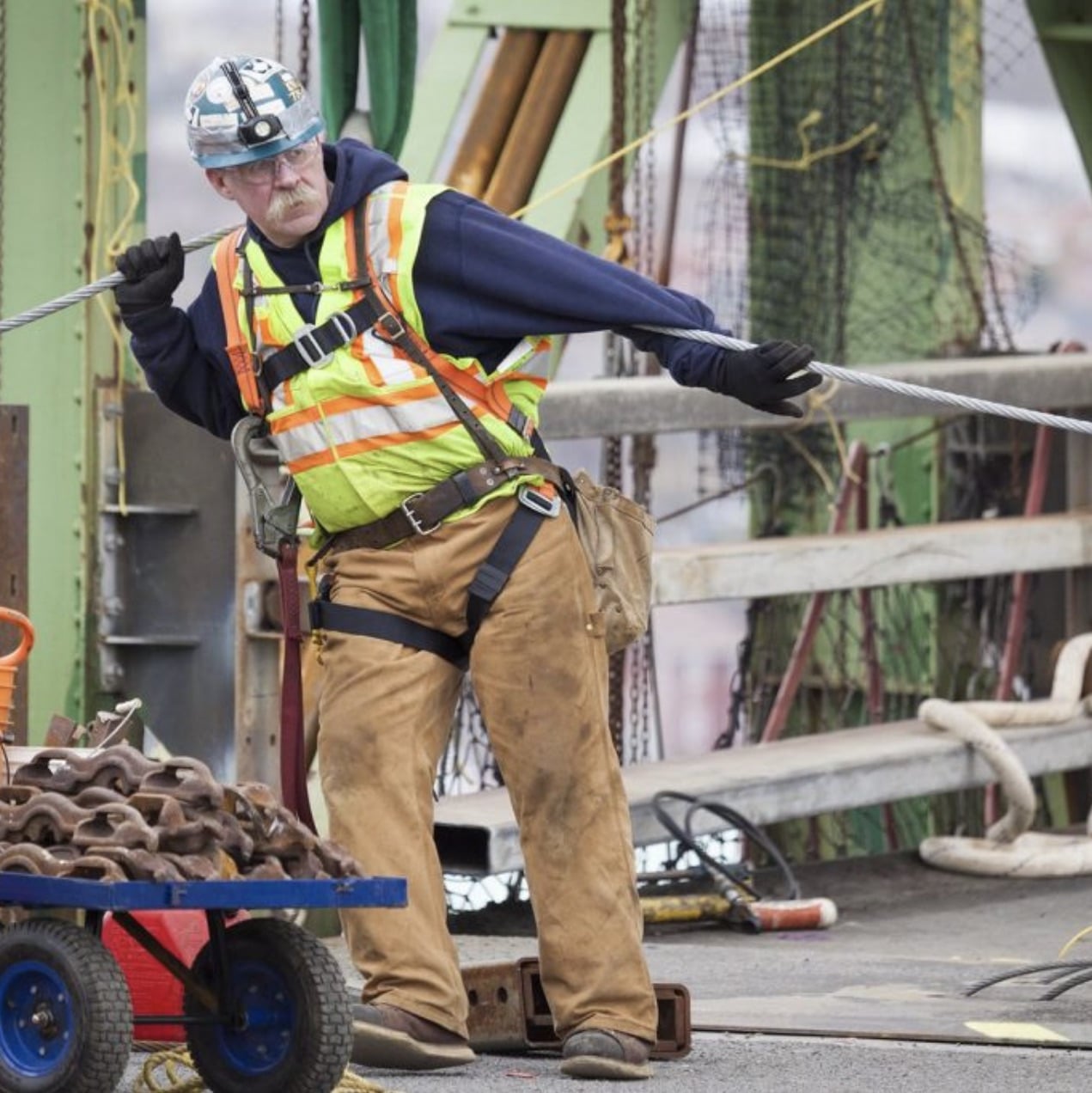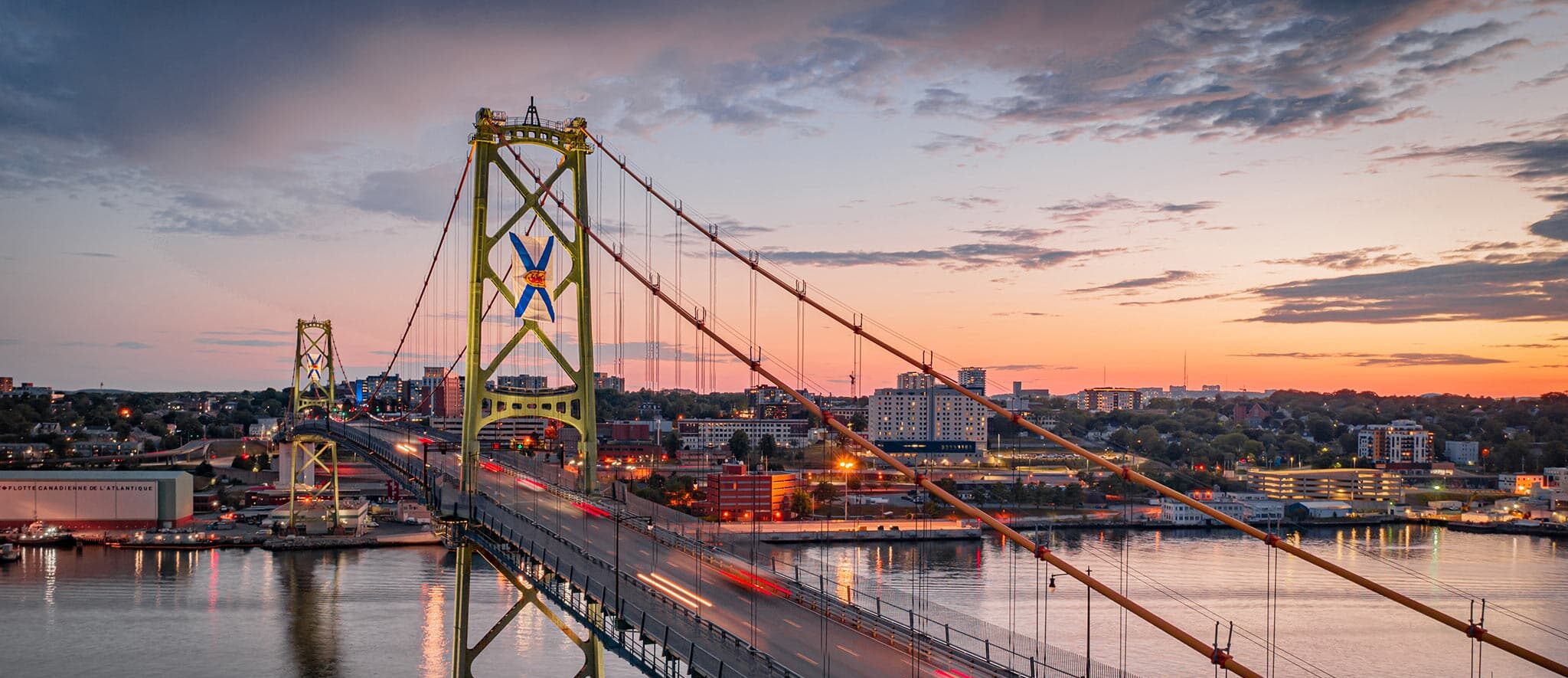HHB CEO on bridge closures and the 10-year maintenance plan
December 10, 2021

THIS STORY ORIGINALLY APPEARED AS A GUEST COLUMN IN THE CHRONICLE HERALD, DECEMBER 10, 2021
If you got all your news from social media, you might think one of the two Halifax harbour bridges is constantly closed.
There’s little question that a closure disrupts the traffic patterns in the city for hours and people caught off guard will require more time to get where they are going.
Perhaps it is some of those people who are turning to social media to vent their frustrations. Motorists take easy and efficient transportation for granted, so when there’s an interruption, it’s jarring.
Halifax Harbour Bridges closes individual lanes on a regular basis to carry out as much of its maintenance as possible, but unfortunately, full bridge closures remain necessary. There are projects – like the replacement of 50-year old bearings – that simply can’t be performed with traffic on the bridge.

How often is a bridge really closed?
HHB construction records show one of the two bridges was closed for seven weekends in 2021 and 10 weekends in 2020. They are closed on the weekends because that is when there is the least traffic, and thus the least disruption.
About 100,000 vehicles cross the bridge on an average weekday. On the weekend, that number drops to 65,000 each day, with very little of that representing commercial traffic. Weekend closures also give work crews doing complicated work more continuous hours to complete a job, rather than trying to jury rig solutions to do a project in pieces over a series of noisy night shifts that disrupt our residential neighbours.
As HHB begins to execute the 10-year maintenance and rehabilitation plan supported by the new toll increase, there will be more closures, not fewer. For the 2022 construction season, preliminary estimates show there will be a minimum of 11 weekend closures of either the MacKay or Macdonald bridges if HHB is to complete the 29 projects required to fulfill its mandate and provide safe, efficient and reliable cross harbour transportation.
Why is so much maintenance required?
When you buy a new car, there’s very little maintenance required. You change the oil, rotate the tires and the amount of time it spends in the shop is minimal. As the car ages though, parts wear out and need to be replaced. The more kilometers you put on the car, the more likely it is to spend an increasing amount of time in the shop. When the kilometers get really high, dropping in a new engine might provide a new lease on life, but you’ll still need to do bodywork and keep up the routine maintenance.
The maintenance cycle for bridges isn’t markedly different. After the Macdonald Bridge opened in 1955, there were not a lot of issues for the first few decades. By the turn of the century, however, the structure required increased attention. A significant project in 1999 that transformed the Macdonald from a two-lane to a three-lane structure (adding dedicated pedestrian and bicycle lanes) helped, but as the bridge marked its 50th anniversary, the wear and tear created by 48,000 daily crossings was evident.
The bridge was safe, but the decking was worn out. Major work was required and engineers developed the Big Lift, a multi-year rebuild that saw road deck, floor beams, stiffening trusses and suspender ropes replaced – all while keeping the bridge open to traffic during the week.
The $205 million project has extended the life of the key suspended span at the centre of the bridge for another 75 years, but work will need to continue on approach spans, including items like the continued replacement bearings critical to the movement of the bridge that haven’t been replaced since 1955.
The MacKay Bridge opened in 1970. Recognized an advanced architectural achievement at the time, it is now presenting the maintenance challenges tied to the leading-edge design.
Deck repairs, main cable dehumidification, and concrete pier repairs are just a few of the projects that will be undertaken in 2023 and beyond. A small amount of funding in the 10-year plan has also been earmarked to consider renewal or replacement options for the MacKay Bridge. One recent study suggested replacement should be pursued as the preferred option.
How is the toll increase going to be spent?
Halifax Harbour Bridges is a self-funding entity. It reports to the Minister of Public Works but does not receive any government funding. It operates on the money it collects in tolls. The 10-year $285 million plan was created by HHB engineering staff based on the advice of an external engineering consultant, COWI. The major elements of the 10-year plan that apply to the Macdonald are to complete the rehabilitation of the bridge not covered by the Big Lift. The budget for the Mackay is needed to maintain the aging bridge and includes deck repairs, dehumidification of the main cable and the repair of areas of fatigue.
In the Nova Scotia Utility and Review Board decision approving the Jan. 3, 2021 toll increase, the board determined that “the projects included in the HDBC’s 2021-2031 capital plan are necessary and appropriate to maintain the Bridges and ancillary structures to ensure they are in good operating condition.”
Details about the specific projects that will be carried out as part of the 10-year plan will be detailed in the coming weeks on the HHB website and include:
- Macdonald Bridge Steel Repair and Paint Project
- Macdonald Bridge Approach Bearings and Pier Rehabilitation
- Macdonald Bridge Approach and Bikeway Resurfacing
- An interview with a global expert on Concrete Work
- MacKay Main Cable Dehumidification
- MacKay Bridge Fatigue Repairs and Component Replacement
- Repair or Replace? What’s the Future of the MacKay Bridge


